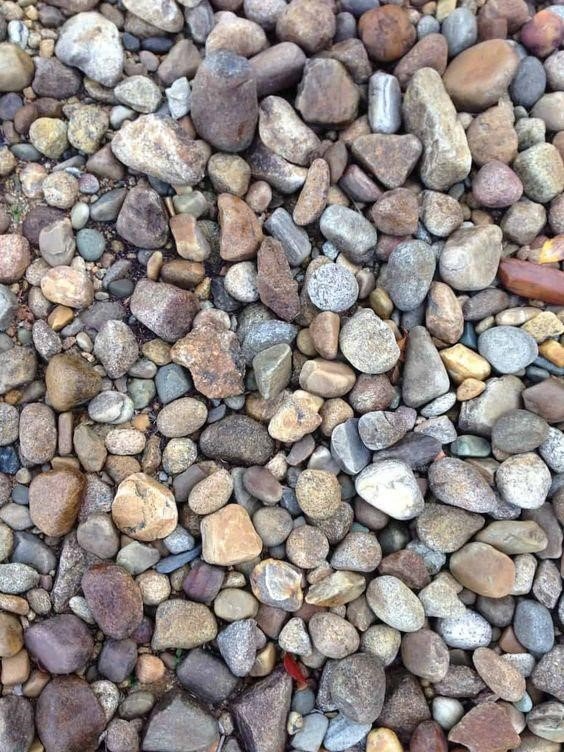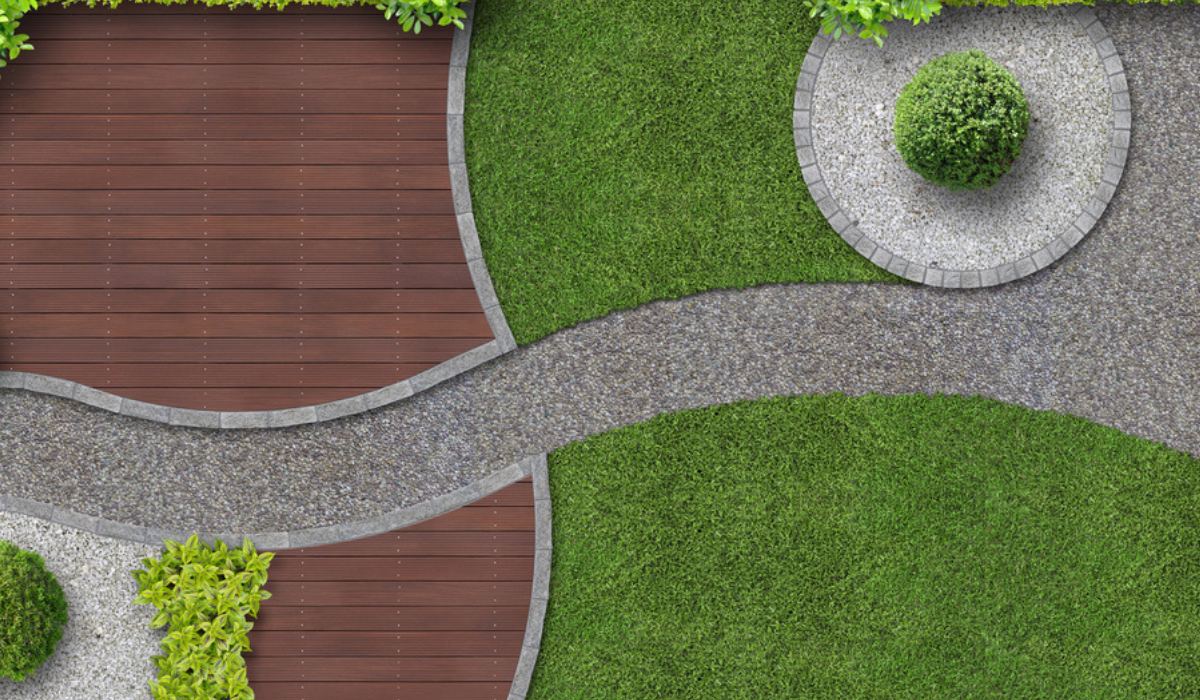Easily calculate gravel needs for your project
Whether you are planning to lay a gravel path on your yard or landscape in general, a gravel calculator is one thing that you will need. Many gardeners or landscape designers face the problem of calculating the amount of gravel they need for a particular project. At times, it can be challenging to estimate the same, leaving it all up to assumption. However, assumptions may result in a waste of materials. On the other hand, if you use a gravel calculator, your estimates will be almost accurate, thus reducing waste.
Gravel types and density
If you are unaware, gravel is naturally-occurring, mostly found as water-borne rocks by the river or buried stream beds. While the common pea gravel has smoother sides, the shape and density of others depend on the parent rocks. Moat gravels are sold in fixed dimensions, like 100 mm or 20 mm, and all the particles in the bunch are guaranteed not to exceed the specified size.
As the density of the gravel depends on its size, you should check the manufacturer’s technical specs before you put the value into the gravel calculator. A typical gravel density ranges from 1,520 – 1,680 kg/cubic metre, and when mixed with sand, the value goes up to 1,920 kg/cubic metre.
Let us know about some common types of gravel used in construction and landscaping endeavours.
Pea gravel

Source: Pinterest
Undeniably, it is the most standard type of gravel used in major landscaping projects and earthworks. It is versatile and considerably inexpensive, thus making it a popular choice among homeowners and landscape designers. The pea gravel also has excellent drainage properties, thus keeping the area clean and preventing erosion to some extent.
Crushed stone gravel

Source: Pinterest
As the name implies, this gravel is derived from crushing larger stone pieces with sizes ranging from ¾ to 4 inches. Due to its extreme affordability and versatility, crushed stone gravel is used in major earthworks and DIY landscaping projects.
Bank-run gravel

Source: Pinterest
Originally found on river beds, bank-run gravel is a combination of different materials, namely rocks, silt, sand, and dirt, along with a variety of stone particles. This gravel is apt for laying on private driveways or pathways in the backyard, as the conglomerate of different materials accounts for more stability and longevity.
Slag gravel

Source: Shutterstock
Are you a green movement enthusiast? Well, this recycled gravel is your thing, then. Originating from slag or the waste of the industrial steel manufacturing process, this gravel can be a tad heavier but highly stable and durable. It is the perfect material for your driveways.
Decomposed granite

Source: Pinterest
If you are looking forward to covering a stable area, decomposed granite can be your best option. It measures around ¾ inch and is equally sturdy as concrete when tamped down. However, the gravel has an excellent drainage quality, making it apt for garden trails and other surfaces that need to stay clean and less muddy at all times.
Lava rock

Source: Pinterest
For exquisite landscaping designs, this can be your best bet. Available in bold shades, the lava rock gravel can tolerate heat, absorbing it during the day and releasing it at night. It is mainly suited for landscape designs in warmer and drier places.
Now that you are aware of the types of gravel, making the best choice for your yard gets easier. Next will be to calculate the amount of gravel you will need. Some gravel calculators will also tell you the price of the gravel so that you can consider your budget before buying.
Save time and money with a gravel calculator
It is an online calculator (web or mobile application) that helps you determine the amount of gravel you will need for an earthwork project. Using careful geometrical measurements and calculations, this tool helps estimate the volume, density, and weight of gravel you need. However, experts opine that it is always best to buy 5-6% more gravel than estimated by the calculator. Even then, the amount of waste will be much less than in the case of assumed quantities.
The basic formula to calculate the amount of gravel needed to cover an area is multiplying the volume of the site by the gravel density.
For a rectangular space, the volume calculation formula will be – height x width x length (cubic feet). For example, if an area has the dimensions 6 ft (length), 1 ft (depth or width), and 0.5 ft (height), the volume can be calculated as 6x1x0.5 = 3 cubic ft. But what if the area to be covered is circular? Then the volume calculation formula will be – π x r2, where the r stands for the radius of the circular area or its diameter divided by 2.
Once you have these values, the gravel calculator can help estimate the amount of gravel you need to cover the area.
Note: If the area that needs to be covered by gravel is neither rectangular or circular, it is best to divide the area into multiple regular shapes (rectangular or circular) to find out the total volume.
Accurate gravel estimates with our calculator
Before calculating the gravel density, you should know more about the common types of gravel, their size, shape, colour, etc. It would help if you also learned how much area a tonne of gravel covers or how much one cubic metre of gravel weighs. Let us help you understand all about gravel to create these estimates easily.
How to use a gravel calculator?

Source: Pinterest
Most gravel calculators that we find online are quite simple to use. All you need to do is:
Step 1: Find out the length, width, and height of the area to be covered with gravel
Step 2: Calculate the volume of the area by multiplying the three values
Step 3: Put these values in the calculator
Step 4: The calculator will instantly show you the volume and weight of material that can be placed on the area. Some calculators will also show you the total price of the gravel, depending on its type and density.
Benefits of using gravel in your garden or backyard
- Ease of maintenance: Gravel does not require high maintenance and can also be laid easily. Sometimes, if the work is done correctly, a gravelled pathway can last you decades with little or zero maintenance.
- Versatile: As you have learned, gravel is a highly versatile material in different shapes, sizes, colours, and features. So, it can be an excellent addition to your garden.
- Affordable: Gravel is way more affordable than most other driveway or pathway materials. If you have a constrained budget, using gravel can ease your financial load to a great extent.
- Climate-resistant: Gravel is suitable for all climates, making it an apt choice for landscape designers. Its excellent drainage capabilities help keep the ground dry and mud-less, perfect for Mediterranean-styled plants that do not grow well in waterlogged soil.
Benefits of using gravel in your driveways
Using Gravel in driveways are comparatively cheaper as compared to asphalt but on the other hand, they do require lot of maintenance as compared to asphalt too. While building the driveway, there are three types of gravel that are used.
The foundation layer or the first layer is called the base gravel and is around 4 inches thick. This helps in easy draining process and also stops the smaller gravels to get embedded in soil. On top of this, there is another layer of gravel that may be the size of golf balls and is 3 inches. The top most layer is the layer that is for aesthetic purposes, which pack the driveway properly.
see also about: tile calculator
FAQs
What is the difference between ton and tonne?
The International Body of Standardization establishes that a tonne is equal to 1000 kg, and the short ton is primarily used in the US as equal to 2000 pounds. Not much of a difference, true, but the value adds up quite fast when the quantity increases.
How much is the typical weight of one cubic meter of gravel?
One cubic meter of gravel weighs around 1.68 tonnes. A square meter of gravel with a depth of approximately 5 cm typically weighs about 0.084 tonnes or 84 kg.
What is fine gravel?
Gravel with particle sizes ranging between 2-4 mm is also referred to as fine gravel.
What is the cost of gravel in India?
The average price per metric ton of gravel in India is Rs. 2,500
| Got any questions or point of view on our article? We would love to hear from you. Write to our Editor-in-Chief Jhumur Ghosh at [email protected] |
Housing News Desk is the news desk of leading online real estate portal, Housing.com. Housing News Desk focuses on a variety of topics such as real estate laws, taxes, current news, property trends, home loans, rentals, décor, green homes, home improvement, etc. The main objective of the news desk, is to cover the real estate sector from the perspective of providing information that is useful to the end-user.
Facebook: https://www.facebook.com/housing.com/
Twitter: https://twitter.com/Housing
Email: [email protected]











